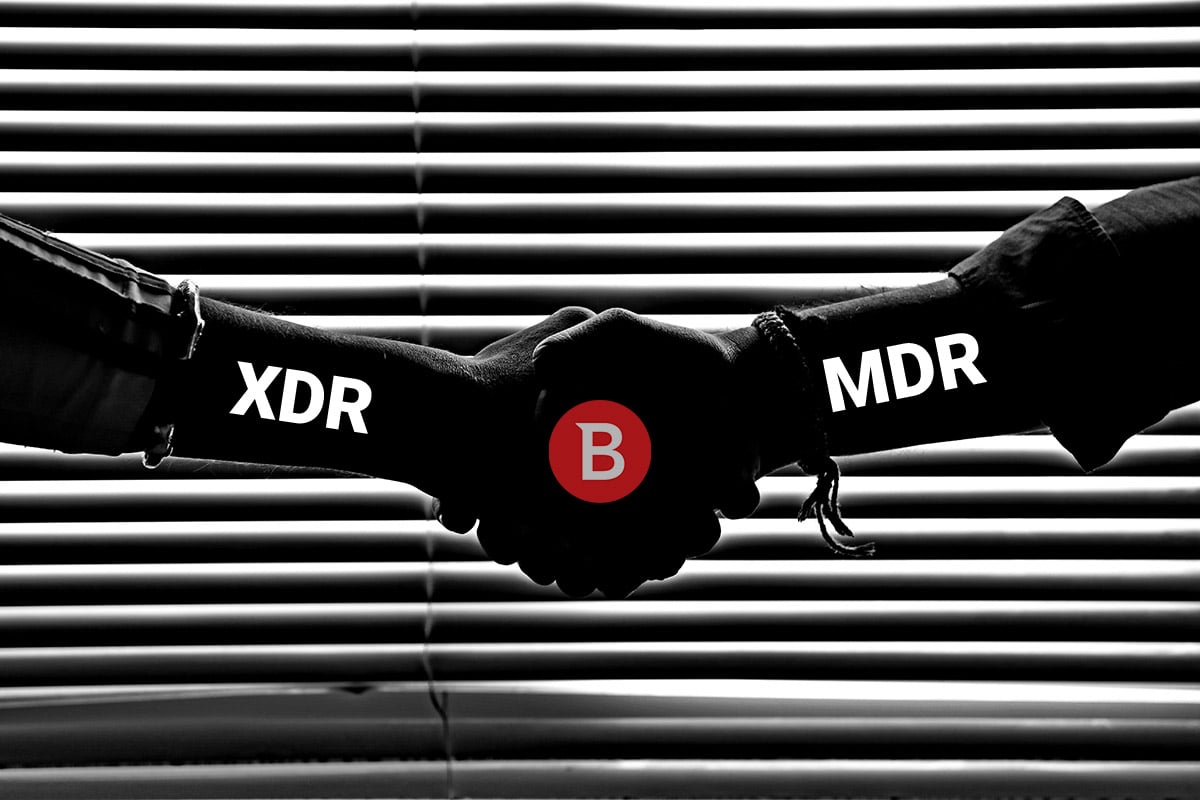Looking for XDR in your MDR Partner | How XDR can improve MDR

Over the last two years, it’s clear that organizations, especially enterprises, need to elevate their detection and response capabilities. Environments are much different and the risk has never been greater to organizations.
The pandemic has driven and fast tracked the need for digital transformation, largely to accommodate the sudden onset of remote work, impacting cloud and SaaS adoption in business applications. This has led to larger attack surfaces, a largely dissolved perimeter, and an overall increase in the complexity of business system environments.
As a result, many enterprises and organizations have correctly concluded that detection and response capabilities are needed and have invested in MDR (managed detection and response services). However, XDR solutions (eXtended detection and response) should be a key part of their MDR and overall detection and response tech stack in order to get a full picture of their organization.
To properly secure and have visibility of this expanded cloud-based environment, XDR must be considered as part of any MDR services.
XDR expands cloud-based security data and analytics
Traditional Managed EDR services are helpful and should be used by enterprises but, by design, they’re limited to just endpoints. In their search for MDR partners, organizations should look for service providers that offer an expanded detection and response capability.
Additional telemetry sources are needed, such as productivity applications, multiple cloud environments and workloads, identity, and network telemetry sources. However, enterprises don’t always have an easy or streamlined way to aggregate and correlate all this data. XDR solutions can improve visibility into disparate systems, helping organizations manage multiple telemetry data feeds.
This expands the overall scope of detection and response, giving enterprises broader and more comprehensive visibility, key for organizations with a large cloud-based footprint.
XDR can help centralize MDR efforts
As organizations further build up their detection and response capabilities and increase their data feeds and telemetry sources, they can struggle with a different challenge: dealing with too much data and too much noise.
This can overburden an already overwhelmed security department tasked with addressing complex tooling as a result of increasing telemetry sources while sifting through noisy data that may actually hinder your team’s ability to respond to actual alerts or compromises.
Vendor management issues as a result of disparate security tools and solutions is a major problem that can be exacerbated as organizations seek to improve their cyber resilience.
However, XDR solutions can be a key tool that centralizes detection and response capabilities. Both forms of XDR, Native or Open, can help organizations here.
Native XDR
Native XDR solutions are a single-vendor option that provides a fast time to value for security operation teams by providing a security tool that has out of the box integrations with non-endpoint telemetry sources.
Because it’s a single-vendor solution, the XDR is capable of integrating and centralizing these telemetry sources without having to rely on the buying organization’s resources. This can help maximize a smaller security team’s effectiveness.
Open XDR
Open XDR tools, on the other hand, was more explicitly designed to help organizations with a wide and varied vendor ecosystem. Open XDR tools (or hybrid XDR), are vendor agnostic and have a higher threshold of flexibility to integrate with every organization’s telemetry sources, regardless of vendor.
These solutions sit on top of an organization’s security tech stack and centralizing analytics, helping a larger security team wrangle multiple vendors and telemetry sources to reduce vendor complexity and streamline response capabilities.
XDR maximizes MDR effectiveness
One of the key benefits of organizations who have partnered with an MDR provider is their access to 24/7 security services and support. By leveraging MDR, they can outsource their SOC services who will, on the organization’s behalf, perform proactive threat hunting. This will ultimately improve alerting, detection, and response capabilities, reducing the damage a threat actor or potential compromise can do.
However, MDR is only as effective as the intelligence and data it has access to. XDR solutions can amplify MDR efforts via augmenting data feeds and centralizing detection and response efforts. This can provide MDR with:
- Contextual alerts: More sources provide a fuller picture of an organization’s environment, helping teams make more informed decisions regarding specific alerts.
- Better proactive threat hunting: Better visibility will only improve a team’s ability to identify and find threats and vulnerabilities.
- Faster time to value: Organization’s can reap the benefits of MDR services faster with optimized telemetry.
- Better root cause analysis: Security departments have an improved ability to understand what led to compromises, allowing them to fix vulnerabilities and remove the risk of a recurring compromise.
XDR solutions are required to address modern threats
Unfortunately, with ever-expanding attack surfaces and a continued reliance on cloud-based infrastructure and services, organization’s have to look beyond traditional EDR tools and give MDR partners the tools they need to comprehensively protect an organization.
XDR solutions are a natural and necessary progression in security intelligence and analytics tools. It’s an enterprise-grade option for enterprise organizations who have a wide, multi-cloud environment. We recommend it for organizations who are looking to expand and add to their contextual telemetry options and for those who are struggling to fully realize the benefits of an expanded detection and response environment as a result of vendor complexity and management issues.
To learn more about how an XDR solution can help your organization, check out our webinar.
Additional resources:
Forrester New Wave XDR report
tags
Author

Josue Ledesma is a writer, filmmaker, and content marketer living in New York City. He covers cyber security, tech and finance, consumer privacy, and B2B digital marketing.
View all postsRight now Top posts
FOLLOW US ON SOCIAL MEDIA
SUBSCRIBE TO OUR NEWSLETTER
Don’t miss out on exclusive content and exciting announcements!
You might also like
Bookmarks










